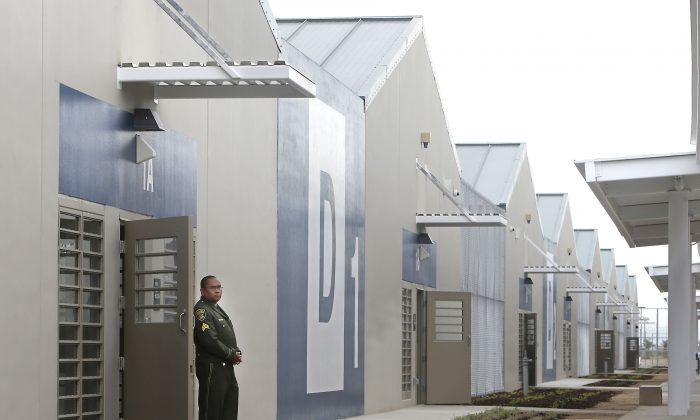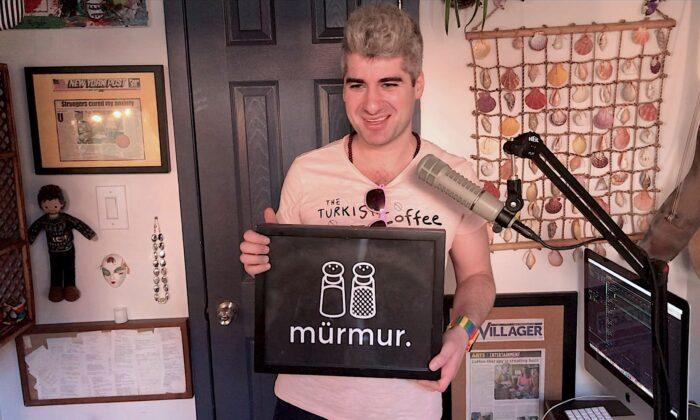STOCKTON, Calif.—California prison officials dedicated an $839 million inmate medical complex Tuesday even as they face a new round of court-imposed mandates that are complicating efforts to run one of the nation’s largest penal systems.
On Monday, a health threat posed by a potentially lethal airborne fungus prompted a federal judge to order as many as 3,250 inmates transferred immediately from two Central Valley prisons. That ruling followed another last week that ordered the state to release an additional 10,000 inmates statewide by the end of the year.
The developments revolve around a long-running court battle over the level of health care delivered to California inmates, which federal judges maintain still does not meet constitutional standards, despite billions of taxpayer dollars spent to improve conditions.
Corrections Secretary Jeffrey Beard scoffed at that assessment as he dedicated the California Correctional Health Care Facility in Stockton, saying it probably is the nation’s most state-of-the-art prison medical facility: “Is that deliberate indifference?” he asked the crowd, referring to the language of the federal judges.
Beard told the assembled employees and dignitaries that the judges are not taking into account all the improvements the state has made since a special judicial panel first ordered it to trim prison crowding in 2009 as the best way to improve conditions for sick and mentally ill inmates. The state plans to make the same argument to the U.S. Supreme Court later this year as it appeals the three-judge panel’s ruling, with the new Stockton facility a prime example of strides it has made.
“It makes our case that we think we are providing a constitutional level of care today,” Beard said in an interview before the dedication. “I realize there is a difference of opinion on that.”
Indeed, the three judges accuse Gov. Jerry Brown’s administration of trying to circumvent their repeated orders that the state reduce prison crowding. They are threatening to cite the Democratic governor for contempt if he does not immediately begin complying, but the administration plans to seek a stay that would postpone their early release order.
The prison system’s years of delays in protecting inmates from the fungal infection known as valley fever is further evidence that the state cannot be trusted to properly care for inmates without federal supervision, U.S. District Judge Thelton Henderson wrote in his order Monday.
Henderson, of San Francisco, is one of the three judges. He separately ordered the state to begin transferring inmates out of Avenal and Pleasant Valley state prisons within seven days if they are particularly vulnerable to valley fever, and gave the state 90 days to complete the transfers. He left it to corrections officials to determine where the inmates should go.
The two prisons are about 10 miles apart and 175 miles southeast of San Francisco, in the San Joaquin Valley.
The fungal infection originates in the valley’s soil. About half of the infections produce no symptoms, while most of the rest can produce mild to severe flu-like symptoms. In a few cases, the infection can spread from the lungs to the brain, bones, skin or eyes, causing blindness, skin abscesses, lung failure, and occasionally death.
Evacuees will include most of the two prisons’ black, Filipino, and medically at-risk inmates because they are considered the most vulnerable to health problems from the fungus.
Beard told The Associated Press that the order could exacerbate violence between race-based prison gangs elsewhere in California. He said the state had been awaiting the results of a U.S. Centers for Disease Control study on the outbreak before deciding how to respond. He said no decision has been made on whether to appeal Henderson’s order.
The early release and valley fever orders come while the state is still struggling to adjust to a 2011 law that is sentencing thousands of lower-level offenders to county jails instead of state prisons, among other changes.
“So you know it really is making things very complex and difficult, and of course my concern is it could eventually cause some adverse effect in some other institution, some unintended effect, and we certainly don’t want to see that happen,” Beard said.
He then accompanied dignitaries and the media on a tour of the Stockton complex that forms the core of a multibillion-dollar plan to bring inmate medical and mental health treatment to constitutional standards.
The institution is an odd hybrid between a traditional prison and modern hospital.
A lethal electric fence topped with concertina wire and gun towers surrounds a central medical and mental health facility that includes a library and education center.
Inmate patients can watch television while they receive hours of kidney dialysis treatment or while sitting in plastic chairs that are bolted to the floor. Skylights provide natural light at nurses’ stations and a neighboring desk reserved for prison guards.
Cells are built with room for hospital beds, and have oxygen and vacuum hookups along with nurses’ call buttons. But the toilets and sinks are standard stainless-steel prison units, and the fixtures are designed to deter suicides.
The facility stands in sharp contrast to conditions that corrections experts described nearly a decade ago at other prisons. They found examining rooms with no sinks, employees who had to walk through sewage puddles or shower rooms to examine inmates, and doctors seeing patients in open areas with no privacy.
But it is far less than what then-Gov. Arnold Schwarzenegger proposed five years ago in cooperation with J. Clark Kelso, the federal court-appointed official who controls prison medical care. The Republican governor had asked state lawmakers to approve $6 billion to build six or seven prison medical and mental health centers to care for 10,000 inmates.
Kelso and prison officials have since agreed to transfer the sickest inmates to the centrally located Stockton facility, with moderately ill inmates going to medical facilities in 11 of the state’s 33 adult prisons. The remaining 22 prisons have basic medical facilities for short-term care.
By year’s end, the 54 buildings clustered at the site of an old juvenile prison will treat 1,720 patients who need long-term care. By next spring, the state plans to complete the neighboring $173 million DeWitt Correctional Annex, which will provide treatment for 1,133 seriously mentally ill inmates.




